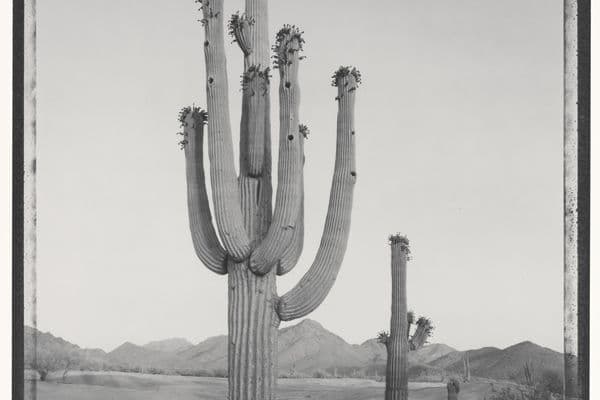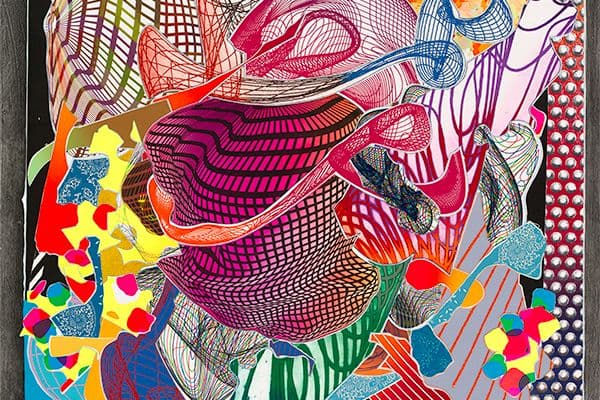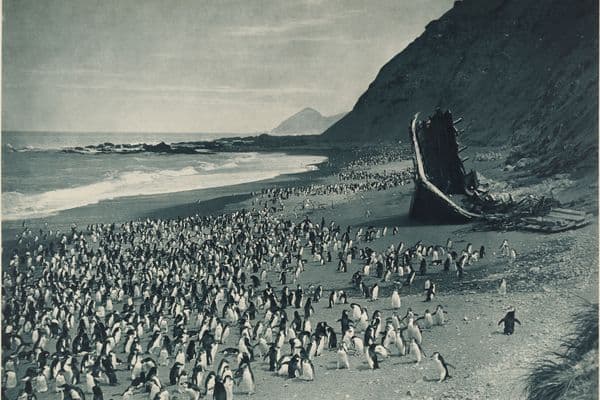Taken to Heart
Recent Documentary Photography
16 Apr 1994 – 7 Aug 1994

Chris Killip, Youth on wall, Jarrow, Tyneside, UK, 1976, National Gallery of Australia, Kamberri/Canberra, Purchased 1989.
Exhibition Pamphlet Essay
For many people, the capacity of photography to capture and chronicle episodes of human experience is its ‘natural’ role and its most alluring attribute. Consequently photography that is socially engaged — revealing different lifestyles, conditions and attitudes — endures as a popular genre for visitors to art museums.
From the time of its invention, photography has been the principal means by which we have fixed impressions of ourselves and our surroundings. The medium is documentary by its very nature. However, the term 'documentary photography' has come to represent a distinct category that refers to a subjective, personal visualisation of the world. It includes photographs made from a specifically humanistic point of view and is understood to convey a message — even asking the viewer to consider the world in a new way — in contrast to photojournalism which informs us of specific newsworthy events.
Among the earliest documentary photographers was John Thomson whose pictures of working conditions, homes and families of labourers were reproduced in Adolphe Smith's Street Life in London 1877. Jacob Riis photographed the homeless in New York during the 1880s and published them in his book How The Other Half Lives 1901. And photographer Lewis Hine attempted to use photography as an instrument for change. His images exposed the appalling child labour conditions that were prevalent in the United States during the early decades of this century.
Following advances in technology during the 1920s there was a great surge of documentary photography. Several small cameras, such as the 35mm Leica, were released; faster lenses, greater portability and unobtrusiveness made them perfect for capturing a poignant gesture or an idiosyncratic composition that could encapsulate the broader situation. French photographer Henri Cartier Bresson termed this instant 'the decisive moment'. It was emblematic of the style used by documentary photographers who proliferated worldwide during the 1920s—50s — they included Erich Salomon, Felix H. Man, W, Eugene Smith, Bill Brandt, Roman Vishniac, Margaret Bourke-White, Max Dupain, Walker Evans, Dorothea Lange, Grace Robertson and Robert Capa.
Picture magazines were the principal platform of the documentary movement from the 1930s—50s, bringing photographs to the attention of a wide audience. The combination of text and photographic picture stories evolved into a sophisticated humanistic presentation until television, as an alternative source of news and commentary, brought about the decline of the photo-essay.
The National Gallery has an excellent collection of photographs from the 1920s—50s and they have been the subject of past exhibitions, including The Documentary Conscience and Facing Facts: The Documentary Photographs.
In recent years the strategies of the documentary photographer have been challenged. Any picture represents a viewpoint. It is the summation of numerous aesthetic, technical and perhaps ethical decisions. Contemporary photographers often exploit these aspects to emphasise the subjectivity of their own perspectives. For example, until recently most documentary photographs have been in black and white. Apart from the practicalities of reproduction, it is the belief of many photographers that the black and white image has a quality that transcends the specifics of time or place. In contrast, some contemporary documentary photographers use high-key colour to pointedly create an aesthetic frisson.
Other media may be incorporated with photographs to create complex installations which broaden our perspective of the scene we are viewing. Alfredo Jaar often includes mirrors in his works and viewers are unwittingly implicated within the scene they are viewing. The subjects artists explore have also broadened significantly — even to include aspects of the artist's own circumstance to describe a general point.
Artists currently working in this genre do not comprise a cohesive photography movement. For some the documentary form is entirely questionable, while others deliberately disrupt and plunder its codes. For many it remains a respected photographic tradition within which they uncritically locate themselves. In this exhibition it is perhaps the artists who have remained well within the boundaries of conventional documentary photography, rather than those who have attempted to subvert its precepts, who have achieved the greatest popular acclaim.
The work of Brazilian-born Sebastião Salgado corresponds with common expectations of photographic reportage. He has been criticised for popularising a return to conventional documentary photography in which the photographer travels the world in search of suffering and oppression. Intrinsic to Salgado's work is a compassion for his subjects — the dispossessed and downtrodden in developing countries. Some viewers may object to the presentation on gallery walls of beautiful prints that deal with suffering, considering that these are not subjects which should engage us on an aesthetic level. The artist's stance is that he tries to see beyond the horrors of specific catastrophes to something more timeless — 'the essence of the human spirit'. This is perhaps most evident in his portrayal of customs and lifestyles of his native Latin America, such as The outskirts of Guatemala City, Guatemala, 1978 and In the very high areas of Ecuador, people sometimes wear sheepskins to protect themselves from the cold and humidity, Attilo, Ecuador, 1982, rather than more topical situations such as the Angolan war or famine in the Sahara.
In the work displayed, Salgado has chosen to keep contextual material to a minimum. In more recent series, such as Workers, he has included extensive texts which explain the social realities behind his imagery.
Josef Koudelka began his career as a theatre photographer and his earliest published photographs were of gypsies. Soon after documenting the 1968 invasion of Prague by Russian tanks, he left his native Czechoslovakia and travelled constantly until his return in 1990. His photographs during those years were observations of the countries of his exile — a journal of the wanderings of a stateless person.
Koudelka's background in the theatre is conspicuous in Ireland, 1972, in which three commanding figures against a backdrop of a windswept coast seem choreographed for a scene from an opera. Similarly, sunlight, strong shadows, and silhouettes in Spain, 1973 are accentuated like stage lighting to create dramatic effects and intense moods. Koudelka's subjects are the festivals, rituals and small villages of rural areas. But the photographs are not celebratory. Titled only by location and date, they are like the travel diary of a tourist who observes but does not engage with the people around him. There is a pervasive restlessness, emptiness and melancholy that betrays a yearning for somewhere else.
Chris Killip was born on the Isle of Man — the subject of his first book. For his series In Flagrante he has again drawn on the knowledge of his own surroundings to describe an aspect of Britain that has a seemingly hopeless future. In Flagrante is dominated by images of young people who represent the desperate outlook of Britain's increasingly de-industrialised north-east where Killip has lived for some years. The reality of economic decline is represented not by closed factories or dole queues, but in the bearing and expression of individuals who endure it, such as the prematurely aged face of a youth on a pony or the anguished expression of a 'bovver boy'.
Killip's In Flagrante was an important influence in Martin Parr's decision to photograph social documentary subjects. Parr's main study is Britain's middle class. His caustically titled series The Last Resort depicts the Merseyside resort of New Brighton over three summers. It is about the people who visit the place, the things they do and the way they appear and behave — the mad scramble at the hot dog shop, a beauty contest for precocious little girls or the interactions with families. New Brighton was developed on a desolate expanse of the Wirral coastline in north-west England and transformed to outshine its Sussex namesake, but decline began soon after the First World War — evidenced in the pollution and industrial machinery highlighted in some of Parr's images.
Parr's use of colour is immediately striking; the high-key tones caused by the combination of bright sunlight and direct flash accentuates the gaudiness of clothing and objects and makes skin appear orange or sunburnt pink.
Nick Waplington's photographs betray none of Parr's irony or satire. He describes his images as a reaction to the ‘grainy, downtrodden, black and white interpretation of working class life’. Living room is a sequence of lushly coloured glimpses of family life. Over the course of four years, Waplington became intimately acquainted with two large working-class families who were living in the municipally subsidised council estates in Nottingham, England. Like the fly-on-the-wall concept of the television series 'Sylvania Waters', a family's intimate exchanges were opened to the public gaze.
Waplington uses close-ups and unorthodox camera angles to bring the viewer into these scenes as if we are experiencing it as one of the family. We are thrown into lively situations — crawling on the carpet with the toddlers, hanging upside down near the ceiling or hoovering the lawn. We can also retreat into the tranquillity of a child's quiet contemplation.
Nicholas Nixon’s richly toned photographs are taken with a large format camera and contact printed from negatives the same size. His first photographs of family groups on front porches were primarily studies in form and tone. His more recent images emphasise a concern with the cycle of life. These portraits are more austere, consisting of closeups of heads and limbs, or details printed larger than life such as A.B. Boston — representing a close relationship and trust between photographer and sitter. Recent work includes portraits of Nixon’s wife and her three sisters, the elderly and people with AIDS.
Nixon's portraits of his wife and her sisters are from a series he has been photographing annually since 1975. There are two constants in the series — a single picture, no matter how many negatives produced, and an unvarying line-up. The result is a time-lapse effect which gives evidence of growth, change and ageing. Photography, itself temporal by nature, is exemplary in its capacity to describe age and map time.
The portraits of people with AIDS were begun in 1987. It was the first time Nixon had chosen an issue of such public importance, let alone one so charged with emotion and controversy. The sequence of portraits of Tom Moran was begun in August 1987 and ended with his death in February 1988. It emphasises the gradual and inexorable progress of the disease. These images, as well as photographs of old people, are unconditional, solitary portraits in which physical description is relentlessly specific; they carry us beyond the emotional aspect to consider our own mortality.
Documentary photography elicits constant and vigorous debate: on the social and political aspects of the subjects, the ethical decisions of artists, their choices in presentation and the viewers' perceptions of them. At the same time, because of its capacity to reveal the circumstances of other peoples' lives, while perhaps conveying something about our own, documentary photography captivates and its popularity endures.
Kate Davidson
Curator of International Photography











